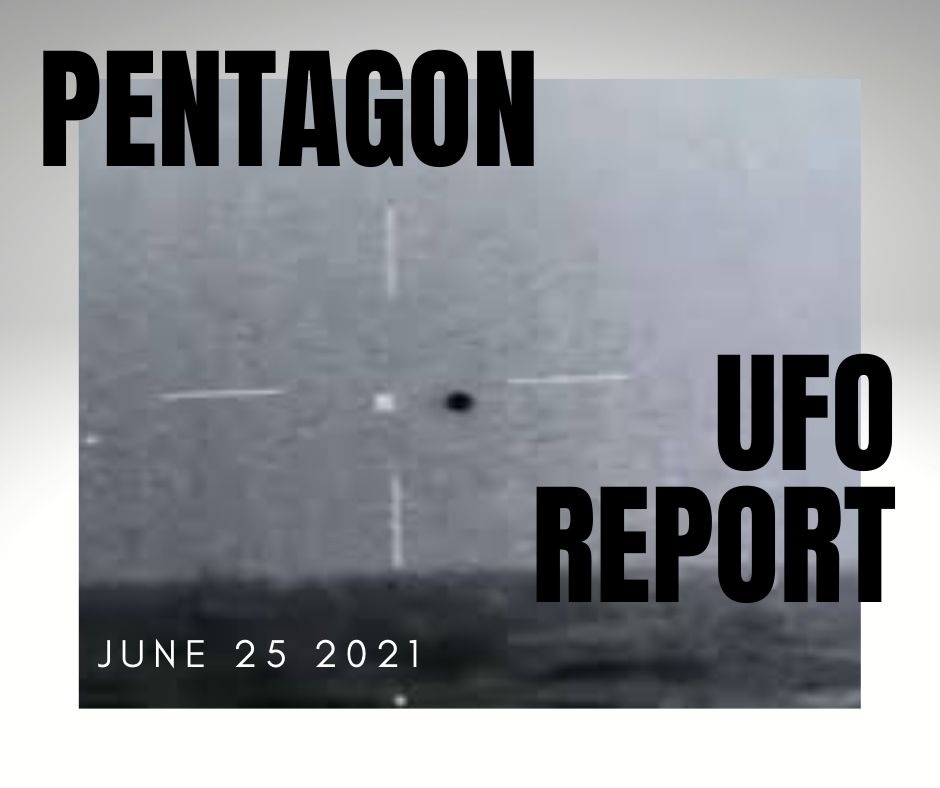Read the Pentagon’s UFO Report from 25 June 2021. The implications are profound. As we have known for a long time, UFOs are real They defy conventional explanations, and until more is learned, pose a serious potential threat to U.S. national security.
But don’t take my word for it read it: Preliminary Assessment: Unidentified Aerial Phenomena. It has been impatiently waiting for months.
For years, the U.S. military had collected sightings of unidentified objects in flight with naval ships and military jets.
In addition, combat pilots occasionally reported spectacular encounters with UFOs (unidentified flying objects).
A comprehensive report on these UFO sightings is now out. The first results are now known. Here I clarify the most important questions and answers.

What Is The Summary Of The Pentagon’s UFO Report?
The limited amount of high-quality reporting on UAPs or unidentified aerial phenomena limits the ability to draw firm conclusions about the nature or intent of UAPs.
The Unidentified Aerial Phenomena Task Force (UAPTF) considered a range of information on UAP described in U.S. military and IC (Intelligence Community) reporting.
However, because the reporting lacked enough specificity, it ultimately recognized that a unique, tailored reporting process is required to provide enough data to analyze UAP events.

What Are The Results Of The Pentagon’s UFO Report?
- The Unidentified Aerial Phenomena Task Force concentrated its review on reports that occurred between 2004 and 2021. The majority of these are a result of this new tailored process to capture UAP events through formalized reporting.
- Most of the UAP reported probably represent physical objects. A majority of UAPs were registered across multiple sensors, including radar, weapon seekers, infrared, electro-optical, and visual observation. In a limited number of UAP incidents, they appeared to exhibit unusual flight characteristics. These UAP observations could be the result of sensor errors, spoofing, or observer misperception and require additional rigorous analysis.
There are probably multiple types of UAP requiring different explanations based on the range of appearances and behaviors described in the available reporting.
However, the analysis of the data supports the construct that if and when individual UAP incidents are resolved, they will fall into one of five potential explanatory categories:
airborne clutter, natural atmospheric phenomena, USG or U.S. industry developmental programs, foreign adversary systems, and a catchall “other” bin.

Former Deputy Assistant Secretary of Defense for Intelligence
UAP poses a safety-of-flight issue and may pose a challenge to U.S. national security. Safety concerns primarily center on pilots contending with an increasingly cluttered air domain.
However, UAP also represents a national security challenge if they are from a foreign adversary collection platform or provide evidence a potential adversary has developed either a breakthrough or disruptive technology.
Regular consolidation of UAP reports from across the federal government, increased collection, and analysis, and standardized reporting.
And a streamlined process for screening all such UFO reports against a broad range of relevant USG data will also allow for a more sophisticated analysis of UAPs that is likely to deepen our understanding.
However, some of these steps are resource-intensive and would require additional investment.

Is The UFO Report Evidence Of Extraterrestrials?
No – according to the officials, there is no evidence that aliens have actually been observed. Conversely, however, the government cannot definitely rule out that the phenomena observed by the military pilots are extraterrestrial spacecraft.
Those UAP sightings will fall under the category: “other.”
What Other Explanations Are There For The sightings?
They will fall into one of five potential explanatory categories:
- Natural atmospheric phenomena
- Airborne clutter
- USG or U.S. industry developmental programs
- Foreign adversary systems
- “Other”
Airborne Clutter: These objects include balloons, birds, recreational (UAV) or unmanned aerial vehicles, or airborne debris like plastic bags that muddle a scene and affect an operator’s ability to identify true targets, such as enemy aircraft.
Natural Atmospheric Phenomena: Natural atmospheric phenomena include moisture, ice crystals, and thermal fluctuations that may register on some infrared and radar systems.
USG or Industry Developmental Programs: Some UAP observations could be attributable to developments and classified programs by U.S. entities. However, we were unable to confirm that these systems accounted for any of the UAP reports we collected in this report.
Foreign Adversary Systems: Some UAP may be technologies deployed by Russia, China, another nation, or a non-governmental entity.
Other: Even though most of the UAP described in the dataset probably remains unidentified due to limited data or challenges to collection processing or analysis.
They require additional scientific knowledge to collect, analyze and characterize them successfully.
They would group such objects in this category pending scientific advances to understand the phenomena better.
The Unidentified Aerial Phenomena Task Force (UAPTF) aims to focus additional analysis on the small number of cases where a UAP appeared to display unusual flight characteristics or signature management.

Why Is The UFO report Coming Now Of All Time?
The Trump administration ordered that at the end of December: the task force set up specifically to present the non-secret part of its report to the US Congress within 180 days – that was, on the 25th of June 2021.
White House spokeswoman Jen Psaki said earlier this month it is a report by the Department of Defense in collaboration with intelligence agencies.
I hope you enjoyed this summary of the Pentagon’s UFO report.
